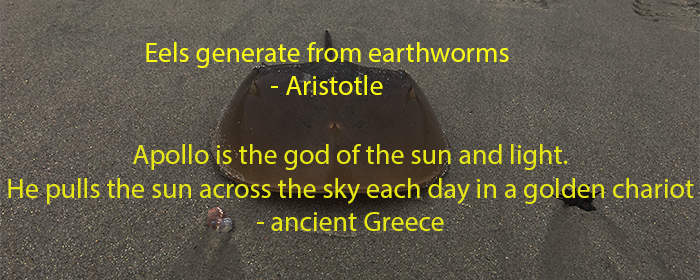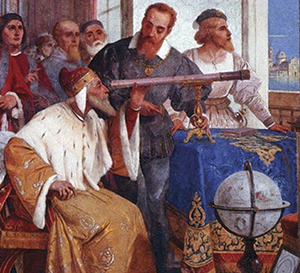How to Catch a Gravity Wave - Part 2
"Thousands of years of civilization passed. Yet, for all their busy history and cleverness, the humans were stuck in a thinking rut..."

"..you are allowed to learn and even to change your mind."
How to Get Out of a Thinking Rut
Thousands of years of civilization passed. Yet, for all their busy history and cleverness, the humans were stuck in a thinking rut. They were just making stuff up. Stuff to explain physical , biological, and social phenomena and processes. Sometimes it was imaginative, clever, even charming, but it was still almost all wrong.

Strangely, no matter how obviously wrong or unhelpful the made-up stories often were, the humans felt that once they had a story, they had to, no MUST, stick to it — as well as make everyone else stick to it. Those that dared to think differently, or even question, were often treated quite badly.

Galileo almost got burned at the stake for disagreeing with the bottom one.
Then, just a fraction of a fraction of a moment in the gravity waves' life span, there was an unlikely period of open-minded exploration. It might be more accurate to say a moment of just plain old common sense. Some humans in certain places, started to open their minds and think outside the "make-stuff-up-and-stick-to-it" box. This astonishing and unlikely period in human history covered several hundred years and has been given names such as the Renaissance, the Scientific Revolution, and the Enlightenment. I say it was unlikely, because given the human propensity for literally hating story changers, it was extremely difficult, and usually dangerous, for these thought pioneers to change other human minds. Even with test data that proved the made-up stories wrong!!

Cosmically speaking, the gravity waves were now extremely close. They had traveled over 99.9999% of their journey. It was still a sure bet that they, like all the others, would pass through the blue planet's solar system without detection.
Reason and Logic over Dogma and Superstition
Early thinkers and experimenters named William Gilbert, Galileo Galilei, and Robert Hooke, were among the first to spell it out.
The following, in my words, sums up their thoughts: "Don't make up stories, then imagine or insist that reality fits those stories, ignoring, even suppressing, anything that contradicts them. Make a shrewd assumption based on logic, reason, data, honest open-minded observations, and known facts. Then test it. If the data repeatedly verifies, then you may have found something useful. You can maybe even call it a "fact" or a "truth", if the data, verified by others over time, continues to verify it.

If the test data doesn't verify, then move on. Get over it. It's no skin off anybody's nose. Chill out. Nobody needs to be killed over it.
Even more wondrous, and relaxing, if new data and information comes along, you are allowed to learn from it and even to change your mind! Isn't that cool?
Still, it wasn't easy. Such a simple, logical, and seemingly non-threatening thinking method, was a hard pill for much of humanity to swallow (and still seems to be for many). But the practitioners of this new way of learning, who came to call themselves "scientists", courageously persevered.
Decade after decade they kept learning. Step by step, they built on what other inquisitive, persistent, and brave, scientists had learned before them. Sometimes they were penalized, imprisoned, even killed, for finding out things that seemed to disagree with the made-up stories.
Within 150 years of the gravity waves' arrival, there was no longer any doubt concerning the power of the scientific method. Accurate and real knowledge, gained by using the scientific method, resulted in marvels of human engineering and science that were previously inconceivable. Advances and technologies that seemed miraculous at the time, became commonplace.
Next page: Conclusion: How They Did It!
Actually Detecting a Ripple in Space-Time!

